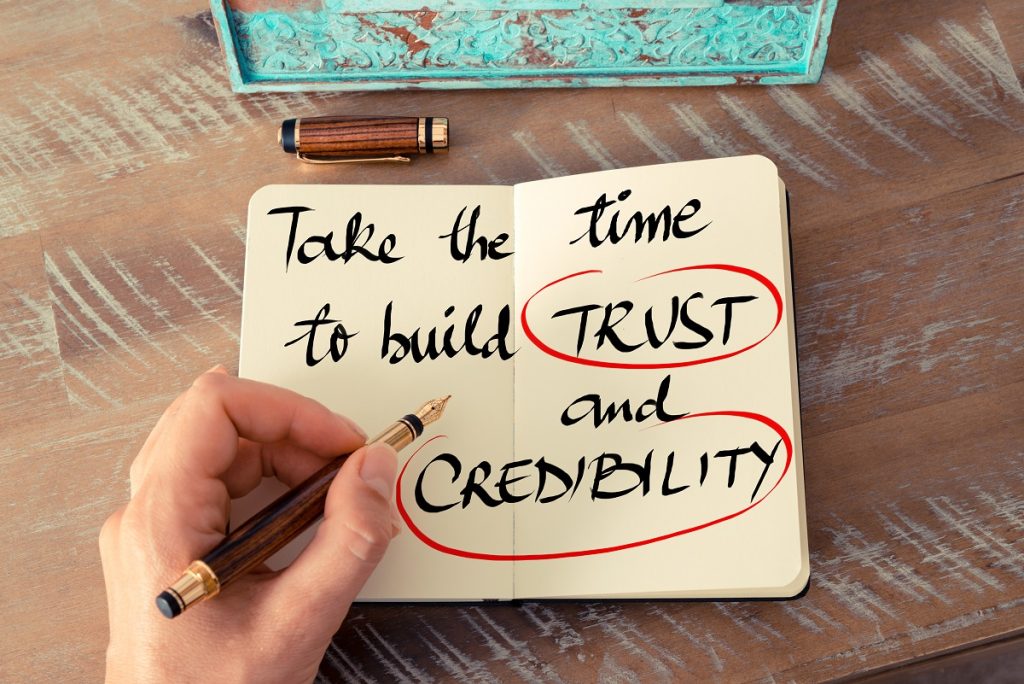

Why your presentation isn’t building trust is a crucial question that many presenters grapple with daily. A lack of trust undermines your message, eroding audience engagement and limiting the impact of your ideas. This article will explore common reasons for this disconnect and provide actionable strategies for establishing credibility and building trust within your presentations. We’ll dissect the elements that contribute to a lack of trust, from poor communication skills to a lack of conviction, and offer practical solutions for turning your presentations into powerful instruments of persuasion and connection. Get ready to transform your presentations by learning how to project confidence and gain the trust of your audience. In this in-depth guide, you’ll discover specific techniques to build credibility, followed by practical exercises to implement these techniques in your presentations.
Understanding the Pillars of Trust in Presentations
Communication Breakdown
Presentations are more than just a collection of facts and figures; they’re a form of communication that relies heavily on trust. When a presenter struggles to build trust, it’s often due to a disconnect between what’s being presented and how it’s being communicated. In essence, poor communication erodes trust. Poor eye contact, a lack of vocal variety, or excessive jargon can diminish the connection with the audience. Consider the impact of clear and concise language; use of everyday language fosters trust. In contrast, presenting information with an authoritative tone can backfire if not supported by evidence and clear explanations. This underscores the importance of aligning your delivery style with the complexity of the subject matter.
Lack of Credibility
Building trust is deeply intertwined with credibility. A presenter needs to establish expertise on the subject matter, and demonstrate integrity by presenting information accurately and fairly. If your audience senses a lack of experience, or perceive dishonesty in the presentation, credibility suffers. A study by Harvard Business Review revealed that presentations lacking credibility saw a significant decrease in audience engagement. To bolster credibility, practice preparation and present information in a neutral and objective tone. Be sure to cite credible sources, especially if presenting sensitive data. Maintain a professional demeanor and avoid making assumptions or generalizations.
Crafting a Compelling Narrative
Beyond Bullet Points
A common pitfall in presentations is relying on bullet points and dense slides. While essential, visuals need to complement a compelling narrative. The core of effective presentations hinges on the ability to weave a story that resonates with the audience. A lack of narrative, often caused by insufficient preparation and a failure to connect with the audience on an emotional level, can lead to a disconnect and erode trust. Avoid simply listing facts; aim to create a framework that explains the context and impact of your ideas. Begin with a strong opening statement that sets the stage for your argument and ends with a powerful closing statement that reinforces the presentation’s main point. Think about how to link these sections with appropriate anecdotes and examples.
Involving Your Audience
Engaging your audience isn’t just about asking rhetorical questions. Involving them actively by providing opportunities for them to contribute their thoughts and ideas demonstrates a willingness to listen and respect their perspectives. This creates a sense of shared ownership of the subject and strengthens trust. For example, encourage discussions, use interactive elements, or pose questions that provoke thought, especially in Q&A sessions. This creates more engagement.
Demonstrating Expertise and Confidence
The Power of Preparation
One key to building trust through presentations is showcasing your expertise. This starts with deep preparation. When presenters lack the necessary knowledge or appear unprepared, it immediately erodes credibility. Thorough research, knowledge of the material, and practice are crucial. Rehearsing your presentation, allows for confidence and natural flow, making the presentation feel more fluid. Practice using different vocal tones and body language to engage your audience. Take note of presentations from other experts to better understand their style and delivery, and to get ideas on how to approach certain subjects in your own presentation.
Projecting Confidence
Confidence isn’t arrogance; it’s about conviction and competence. Projecting confidence through body language, tone of voice, and direct eye contact can significantly boost your credibility. Avoid fidgeting, speaking too fast, or mumbling. Practice deep breathing techniques before you start and take breaks between slides. Confidence fosters trust and suggests competence, making a positive impression on your audience.
Addressing Concerns and Anticipating Questions
Proactive Question Handling
Demonstrating preparedness involves proactively anticipating the questions your audience might have. Addressing potential concerns in your presentation shows respect for their input, and you are actively involved and knowledgeable in the subject matter. Prepare answers for questions on complex topics, or areas that require a deeper explanation. By acknowledging potential objections or roadblocks early in your presentation, you immediately project an understanding of their perspective, and earn trust. Include questions for the audience and allow them to share their opinions
Responding to Feedback
Constructive feedback, whether positive or negative, should be handled respectfully. Showing a willingness to acknowledge and address feedback demonstrates an open mind and an eagerness to learn. Actively listen to audience comments, and use them to improve future presentations. If you acknowledge these inputs, it gives the audience the impression you are open to feedback, enhancing trust.
Visual Aids and Storytelling Techniques
Visual Appeal
Presentations shouldn’t only rely on text; impactful visuals such as charts, graphs, or compelling images can significantly enhance understanding and engagement. Visual appeal is essential, as is proper slide formatting and the appropriate use of visuals and text. A lack of visual appeal, along with cluttered slides or poor color choices, can cause distractions and erode focus. Use high-quality images and graphics to complement your message. Avoid using too many words or numbers on each slide. Keep the text concise and easy to read. Be sure to keep your text and visual data to a minimum.
Engaging Storytelling
Use storytelling to connect emotionally with the audience. Relatable stories and anecdotes can make your presentation more memorable and persuasive. Avoid generic examples; opt for stories that clearly illustrate your points. Sharing personal experiences or referencing historical events are great ways to convey information and make complex concepts relatable. Using narratives engages the audience’s emotions, allowing your key messages to sink in better.
Rehearsing and Refining Your Presentation
The Importance of Practice
A presentation will feel much more polished and natural with practice. Rehearsing your presentation will not only refine your delivery but also help you anticipate potential challenges. During practice sessions, note areas where you may struggle and dedicate time to improve those areas. Practice in front of a mirror or trusted friend or colleague. This will help you identify any shortcomings in your communication style or delivery. This also allows you to collect important feedback on your presentation and what you can improve.
Adaptability and Refinement
The ability to adjust on the spot is crucial for creating a dynamic and engaging presentation. While thorough preparation is essential, the ability to adapt to unexpected situations or audience feedback is vital. Be open to audience reactions and be ready to adjust your presentation based on their engagement levels or specific questions.
Handling Q&A Effectively
Addressing Questions Respectfully
The Q&A session is an essential part of any presentation. Effective communication and engagement with your audience involves addressing their questions respectfully and thoroughly. Avoid being dismissive or making assumptions about the audience’s inquiries. Answer questions concisely and honestly, avoiding generalizations or vague statements. Provide accurate and detailed answers, backed by evidence when possible. Ensure you keep the tone neutral, and that your answers are clear and precise. Acknowledge all questions raised
Addressing Challenges with Grace
Difficult questions or challenging feedback can happen in any presentation. How you handle these instances is critical for maintaining credibility. Avoid getting defensive or becoming flustered. Respond with confidence and professionalism, acknowledging the concern and offering a thoughtful response. Remain composed and express confidence, even if a specific question takes you off-track. If you do not know the answer to a particular question, admit you don’t have the answer to avoid giving inaccurate or misleading statements. Offer to follow up or direct the audience to a more relevant resource.
Tailoring Your Presentation for Different Audiences
Recognizing Audience Diversity
Successful presenters recognize that different audiences will have varying levels of knowledge and interests about the topic. Tailoring your presentation for diverse audiences and speaking to their understanding, by addressing their specific needs and expectations. This includes adapting your message, visuals, and examples to resonate with their unique context. A presentation designed for technical experts will differ considerably from one aimed at a general audience. The tone, level of detail, and language choices will vary based on the targeted audience.
Adapting to Feedback
By keeping an open mind, and actively collecting feedback, you can adapt your delivery to enhance engagement and improve credibility. This process of adjustment ensures that you deliver an effective message that resonates with the individuals in the audience.
In conclusion, building trust in presentations is a multifaceted process that requires a conscious effort to understand and address the root causes of a lack of credibility. By honing your communication skills, crafting compelling narratives, and demonstrating expertise, you can establish trust with your audience. This, in turn, improves engagement, increases impact, and ultimately facilitates stronger connections with your listeners. Ready to unlock the power of persuasive communication? Let’s continue the discussion by booking a consultation. We’ll analyze your existing presentations, and tailor a customized plan to help you build that crucial connection with your audience and boost presentation credibility.